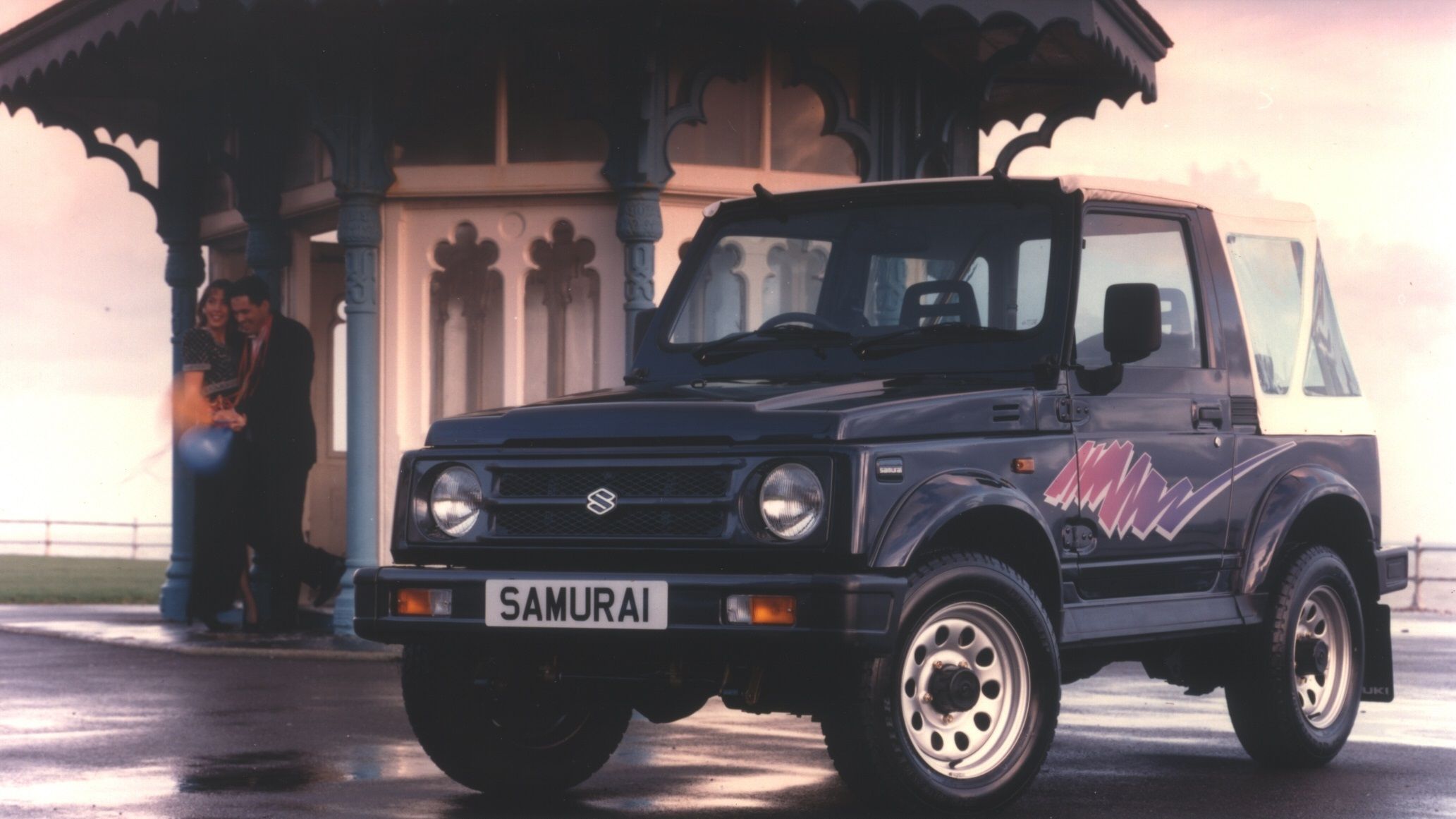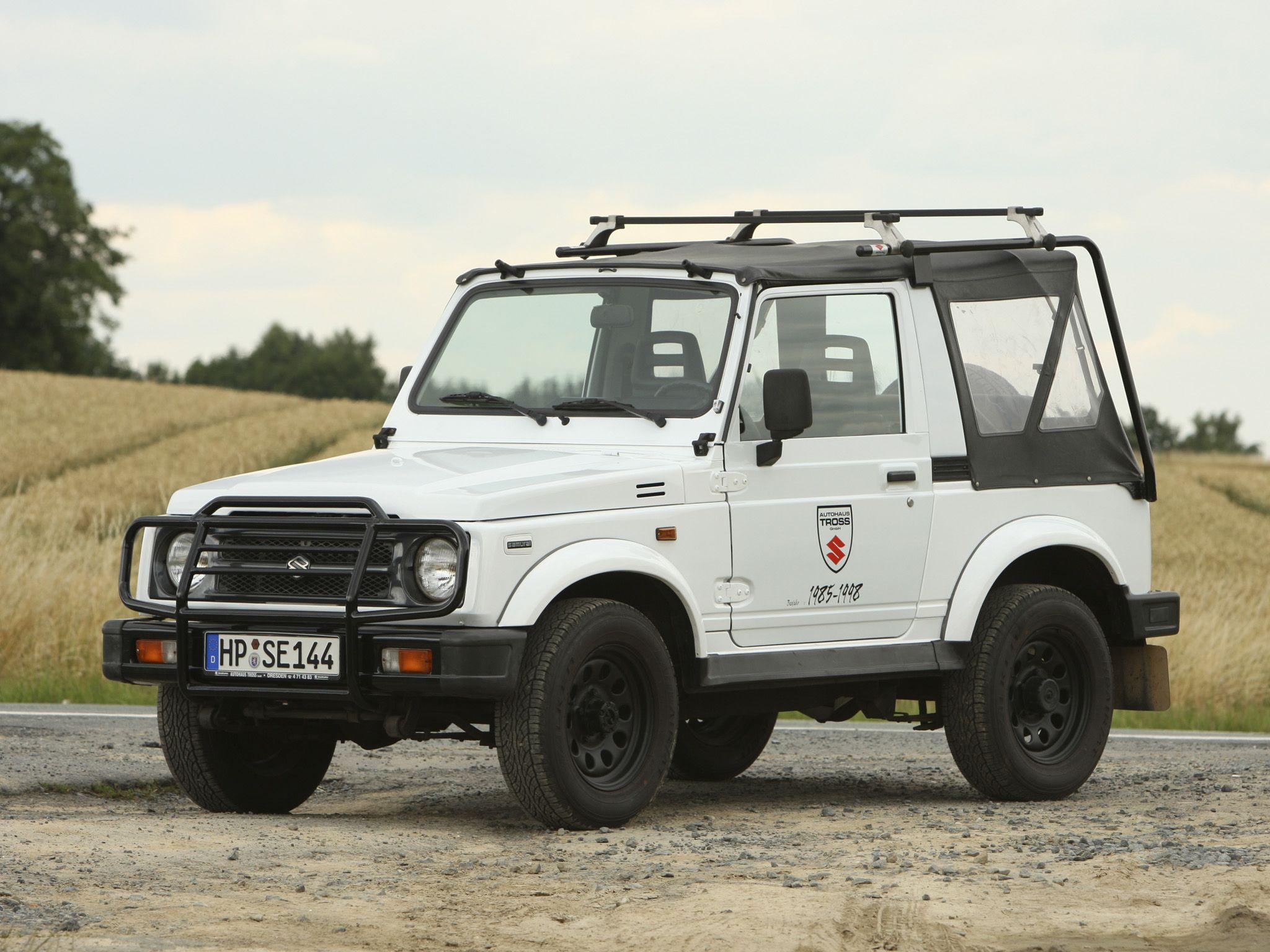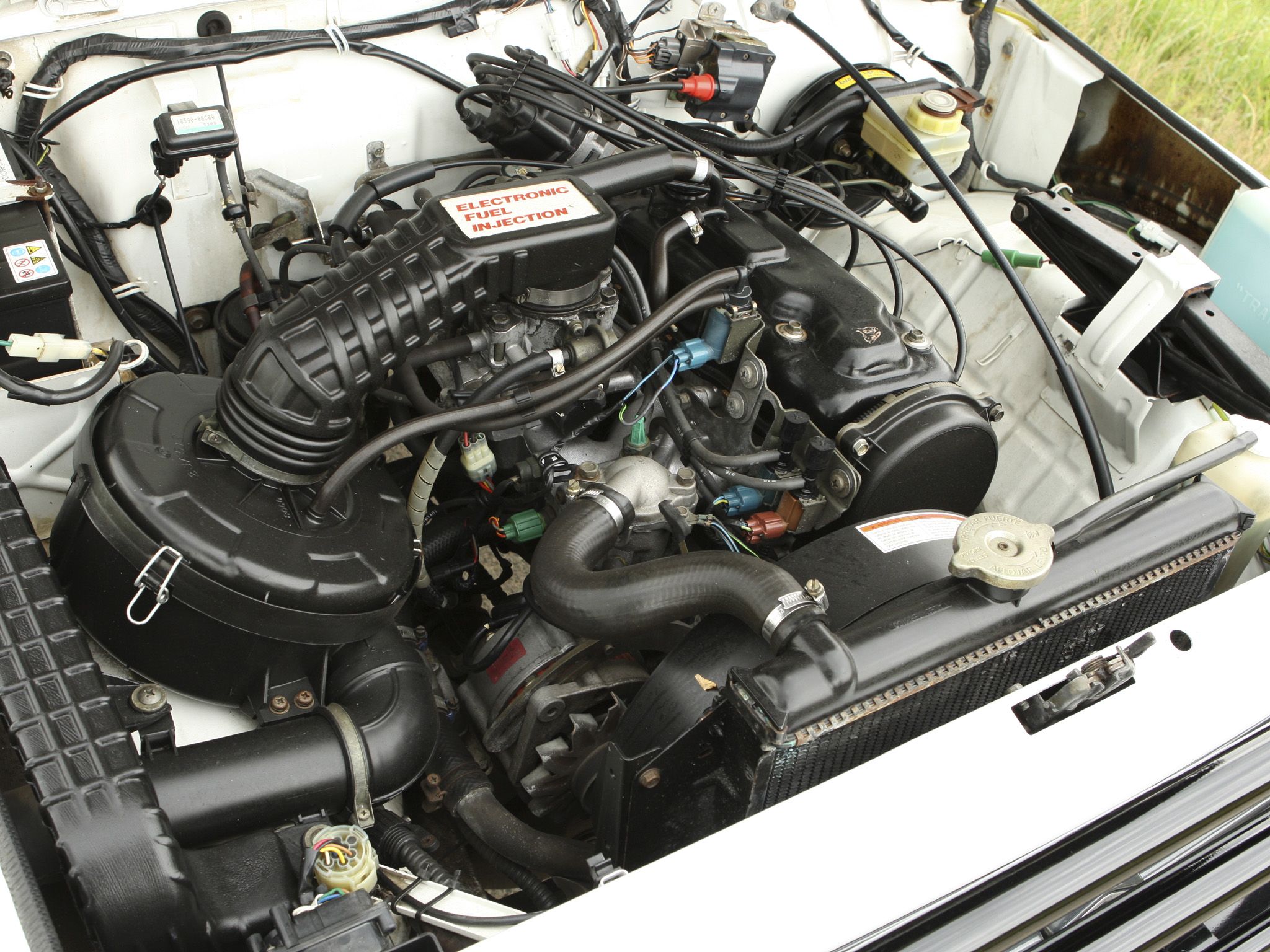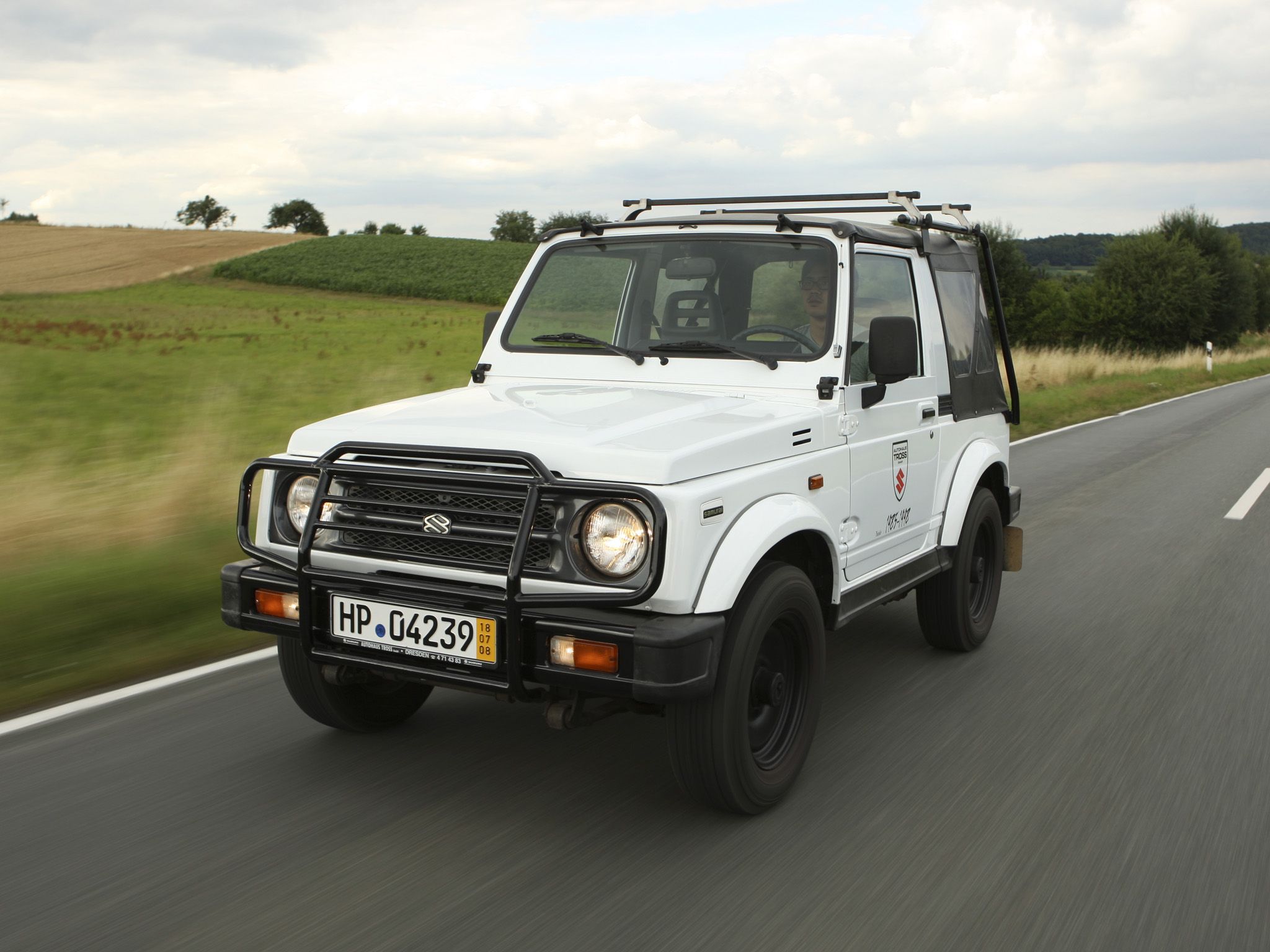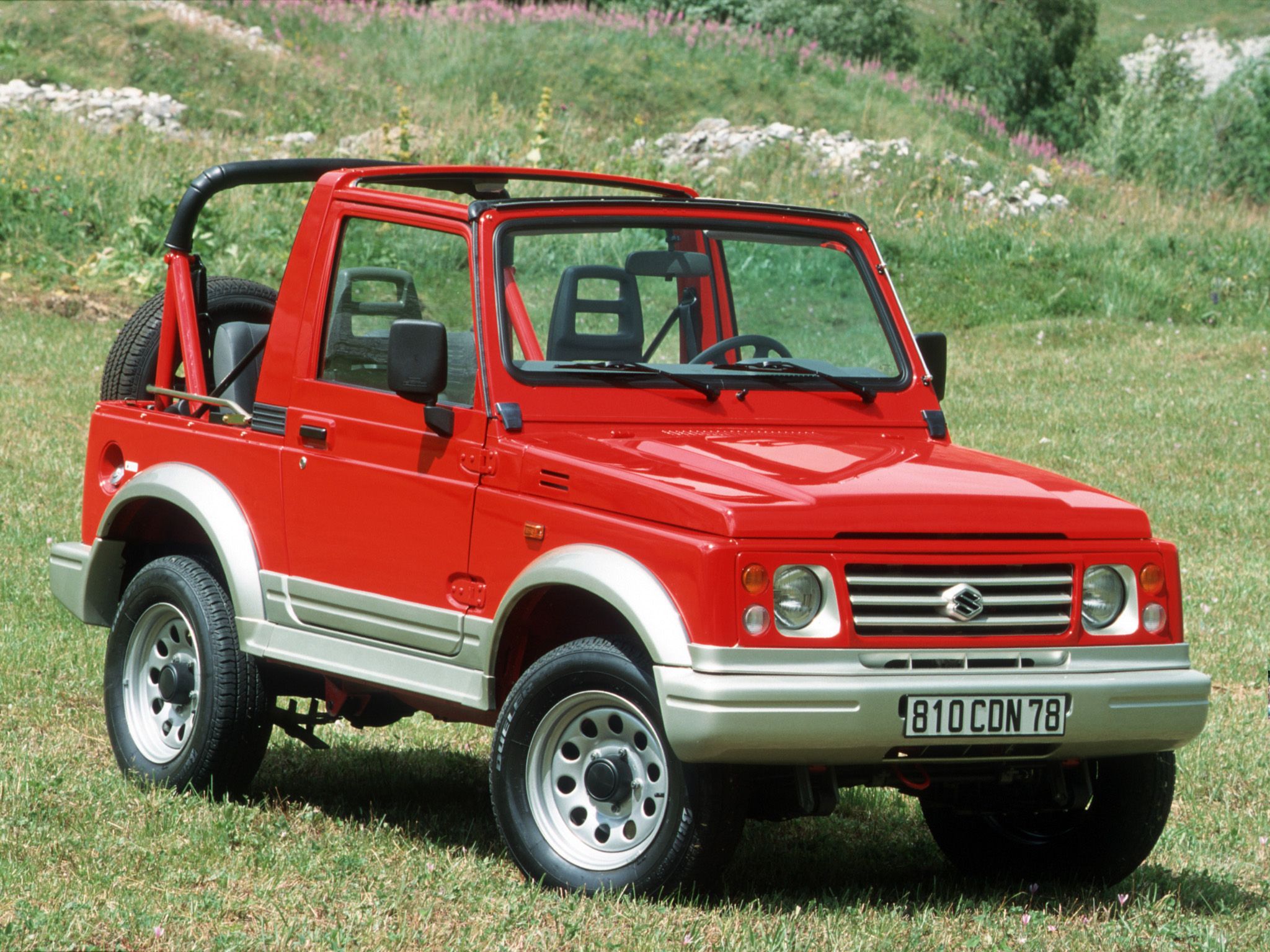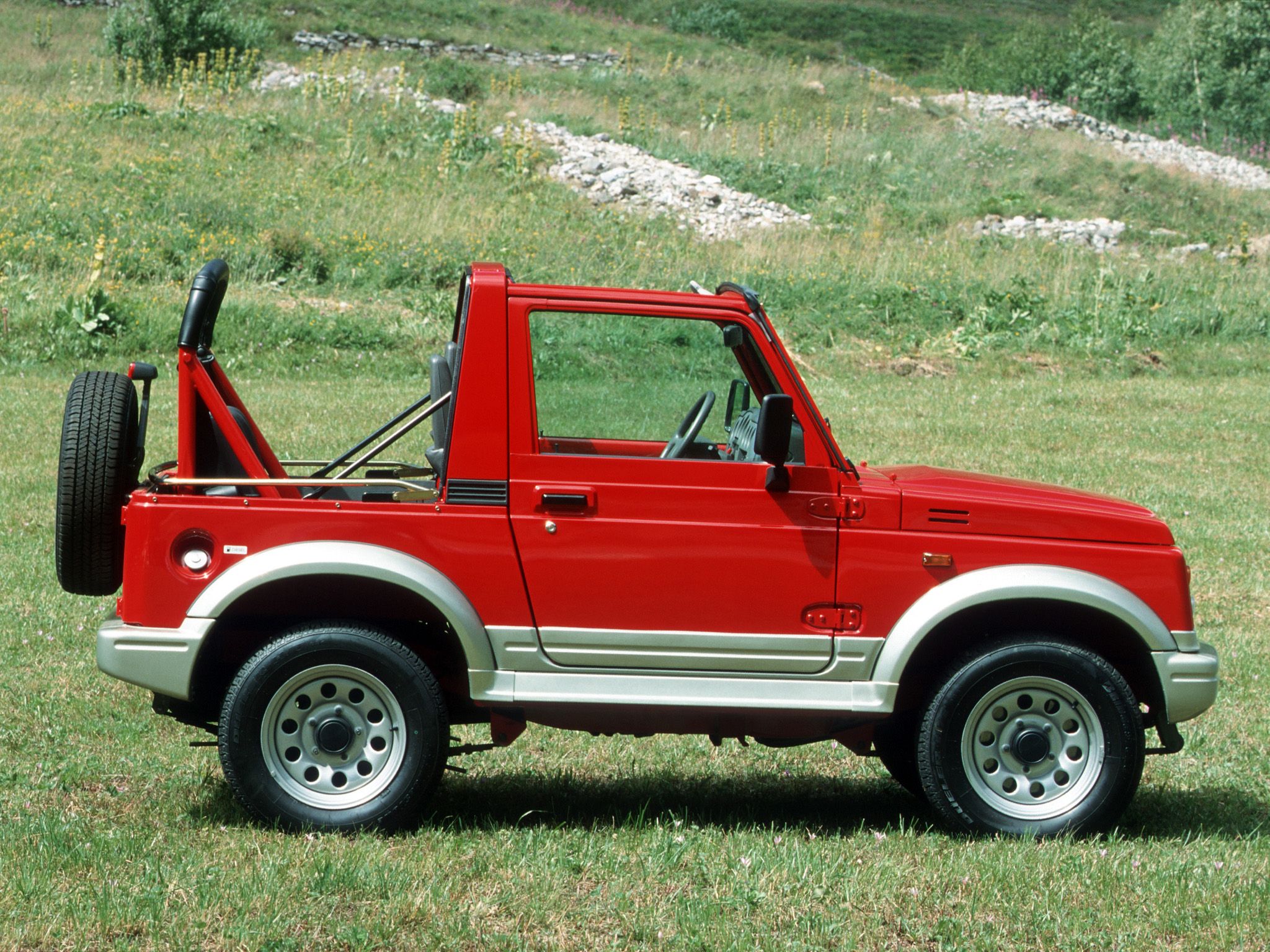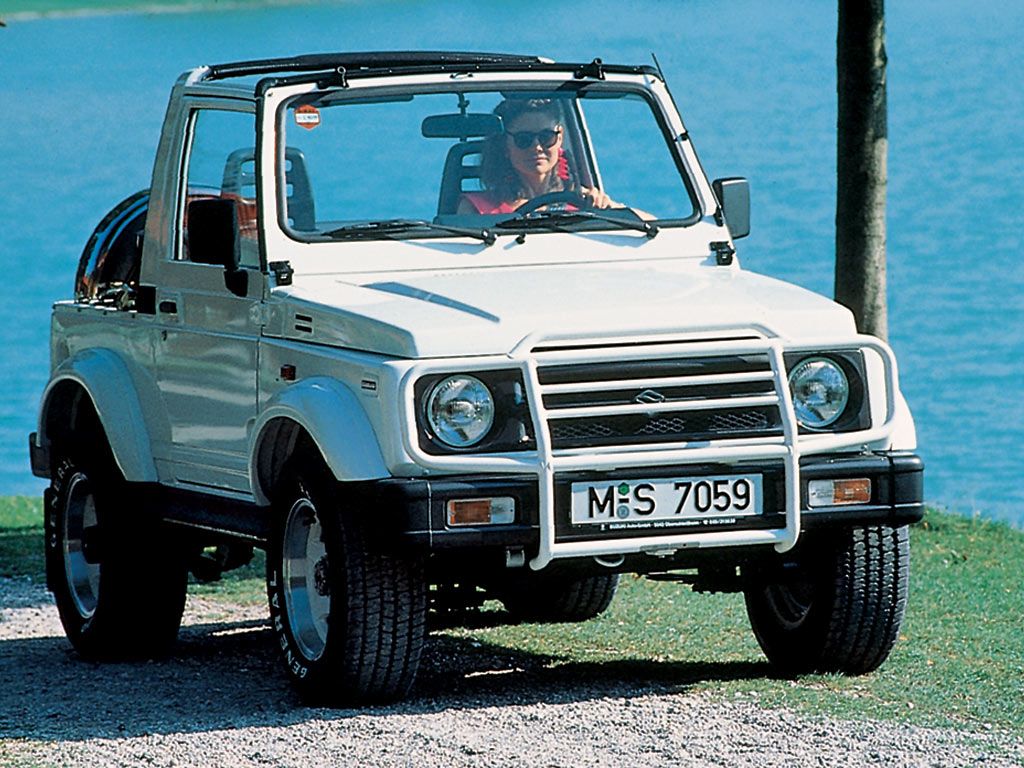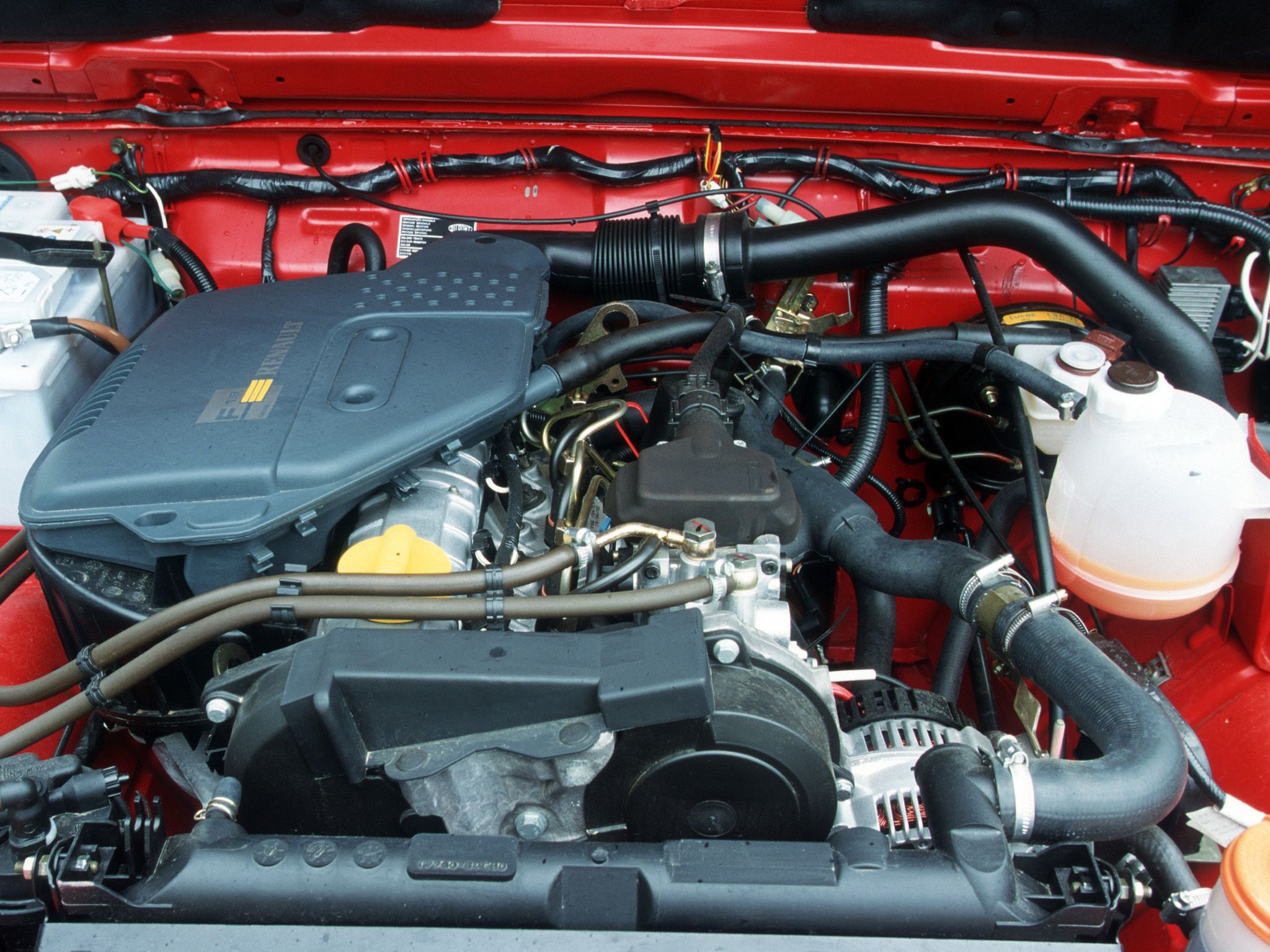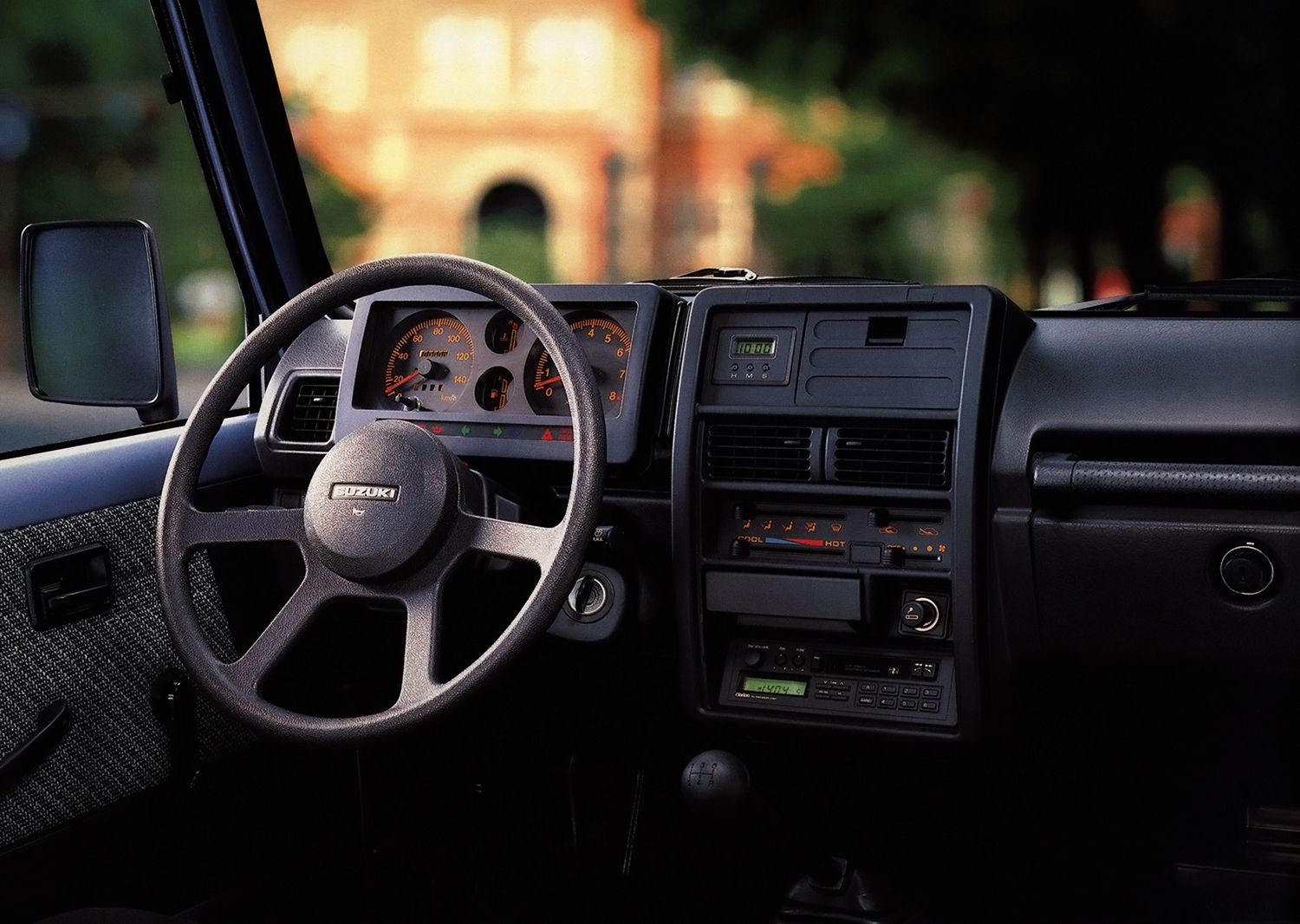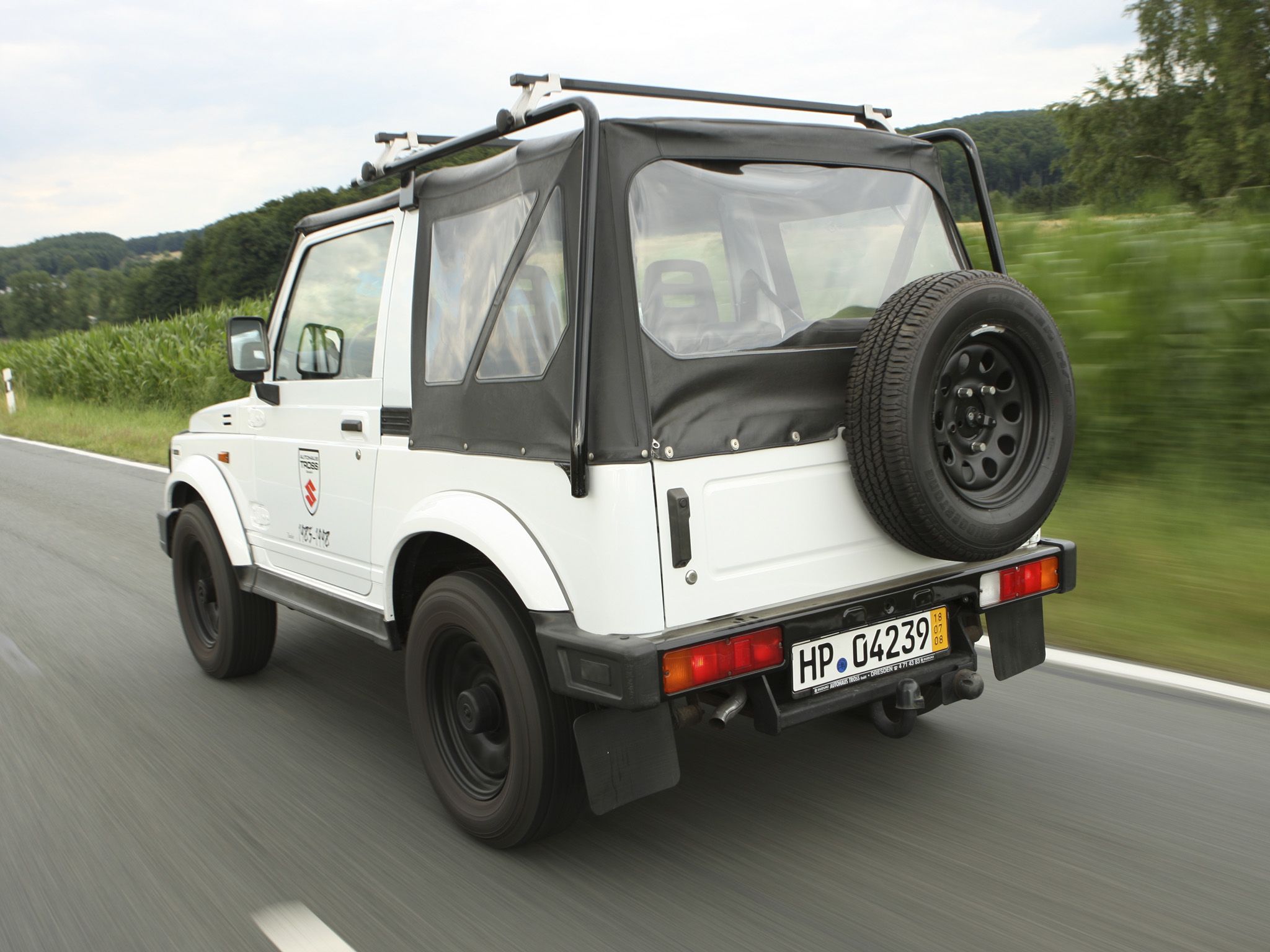The Suzuki Samurai reached our shores in 1985 but lived a very short life before the sales hit rock bottom. However, that was enough for enthusiasts and purists to realize that this little off-roader will be remembered for ages to come by. The Samurai was cheap and affordable, and its compact size made it stand out from the horde of other big, bulky, off-road SUVs and trucks.
Over the years, people have realized that the Samurai can go places that even the more accomplished off-roaders can’t. Currently sold as the Jimny worldwide, Suzuki has sold almost three million copies to date since its inception in 1970. Although the Samurai was quite famous in the States, there are a few things that not many people know about. So, here’s a list of 10 surprising facts about the Suzuki Samurai.
It’s Not The First four-wheeled vehicle Suzuki Sold In The U.S.
Contrary to the beliefs that the Samurai was the first four-wheeled vehicle that Suzuki sold in the States, the seeds had actually been planted two decades before the Samurai was introduced.
In 1968, a Japanese company called Hope Motor Company introduced a small four-wheel-drive vehicle with a 359 cc Mitsubishi engine called the ON360. Suzuki later purchased this company and transitioned the ON360 into the 1970 LJ-10 ("Light Jeep"). The LJ-10 was imported to the States by the Marketing Head of Suzuki at that time, Tim Sharp, and was sold in California, Nevada, and Arizona. The tiny engine was not successful here, so Suzuki later went on to introduce the Samurai, and the rest is history.
The Samurai Was Essentially A Rebadged Jimny
So, the Samurai sold here was actually the second-gen Jimny that was sold elsewhere. It came with a carbureted 1.3-liter overhead-cam four-cylinder mill that made 63 horses and 74 pound-feet of torque. The four-wheel-drive vehicle featured a five-speed manual gearbox. As for the dimensions, it measured 135 inches in length, 60.6 inches in width, and 64.6 inches in height. The short 80-inch wheelbase was deemed to be the culprit for the rollovers. It weighed 2,059 pounds. Suzuki had priced the Samurai at $6,200 for the base trim and $7,500 for the top model.
Suzuki Samurai specifications
|
Engine |
1.3-liter overhead-cam four-cylinder |
|---|---|
|
Horsepower |
63 HP |
|
Torque |
74 LB-FT |
|
Transmission |
five-speed manual |
|
Length |
135 inches |
|
Width |
60.6 inches |
|
Height |
64.6 inches |
|
Wheelbase |
80 inches |
|
Weight |
2,059 lbs |
You Can Blame Consumer Reports For The Samurai’s Premature Death
The Samurai was selling like hotcakes and was deemed to be a runaway success. Suzuki even had to quickly speed up its expansion plans in the States. In 1988, an employee of Consumer Reports rolled the test car under normal driving conditions and gave it an ‘unacceptable’ rating along with the comment – “easily” rolls over in turns. The company insisted NHTSA to issue a recall, but the latter refused. But still, the damage was done. The CR report spread like wildfire and the Samurai’s sales plunged by 70-percent.
In 1996, Suzuki even sued CR for $60 million in damages and unspecified punitive damages. However, both the companies settled out of court in 2004. In the settlement, CR agreed to mention the agreement that it “never intended to imply that the Samurai easily rolls over in routine driving conditions.” And it notes that it “never questioned the safety of any other Suzuki model” and, in fact, “praised the Suzuki Sidekick and recommended the Suzuki Vitara/XL-7.”
The Samurai Holds A Guinness World Record That Is Still Unbeaten
An adventure duo from Chile holds the record for driving to the highest altitude by car. Which car, you ask? Pretty obvious, isn’t it? The duo, Gonzalo Bravo and Eduardo Canales, climbed 6,688 m (21,942 feet) on the slopes of the Ojos Del Salado volcano, Atacama, Chile on 21 April 2007 in a 1986 modified Suzuki Samurai. Other than the obvious suspension and tire change, the Samurai was also equipped with a supercharged G16A four-cylinder mill.
When The Samurai Rained On The Wrangler’s Parade
When the Chilean duo reached the high point, they saw a sign that the previous record holders, Matthias Jeschke and his team, had left there. The folks had used a Jeep Wrangler for their record attempt. The sign read: “Jeep Parking Only: All others don’t make it up here anyway.” Gonzalo and Eduardo passed this sign and brought it back with them. To this day, the Samurai’s record remains unbeaten. Jeep would perhaps be happy that the Samurai didn’t live for long since it almost became a threat to the Wrangler.
The Samurai Was Even Offered With Two-Wheel Drive At One Point
People praise the little SUV for its fantastic four-wheel-drive system, but did you know that it was sold in a two-wheel-drive configuration as well?
But, as expected, it didn’t have a lot of takers and the automaker pulled the plug on this variant in 1993.
The Samurai Exceeded Suzuki’s Initial Expectations
When the Japanese automaker introduced the Samurai in the U.S., they expected around 1,200 examples to be sold a month and imported the same here accordingly. But thanks to the pricing and the overall proposition that was on offer, the demand far exceeded this, and Suzuki was soon selling 8,000 copies a month. It sold 47,000 examples in the first year, which is a record for the best first-year sales list of any Japanese cars in America. In the first three years itself, Suzuki had sold over 150,000 Samurais in the U.S. The company had to speed up its expansion plans to cater to this growing demand.
The Consumers Reports Article Made A Huge Impact On Suzuki’s Future In The U.S.
In 1989, Suzuki introduced the Sidekick. Unfortunately, it was at the time when the Samurai’s sales were declining thanks to the CR article’s effect. Although the Sidekick was bigger, more powerful, and a lot more stable, it didn’t succeed in the market and met the same fate as the Samurai. It is believed that the long-lasting impression of the CR article kept people away from this four-wheel-drive vehicle as well. Chevy rebadged it and sold it as the Geo Tracker in the North American market, but even this didn’t survive for long.
Suzuki Introduced A Samurai That Could Drive Better On-Road
Although the Samurai was presented as a hardcore off-roader, Suzuki tried to create an iteration for better on-road use as well. This model was introduced in 1988 and was fitting called the "1988½" model. In this iteration, the Samurai included softer suspension settings and a larger anti-sway bar to reduce body roll. A lower 5th gear ratio – .865:1 versus the earlier .795:1 – increased engine rpm and power on the highway. Suzuki introduced a new aluminum radiator, a redesigned valve cover, and a larger transfer case U-joint flanges.
On the inside, it looked more appealing as the dash was completely redesigned. Square air vents replaced the round ones and the three-spoke steering wheel made way for a four-spoke unit. Seats were redesigned for comfort during long journeys and rubber shifter knobs were added to extract the raw feedback the shifts gave.
Would The Wrangler’s Future have been In Jeopardy If The Samurai Had Stayed Longer?
This is big speculation, but do you think the Wrangler’s sales would’ve taken a big hit if the Samurai would’ve survived? When introduced, the Samurai cost almost two-thirds the price of the Wrangler at that time. The Wrangler was introduced in 1983, so it didn’t have the legacy back then what it has now. In fact, in 1986, sales figures dropped to 16,853 from 37,956 examples sold the previous year. Suzuki’s little off-roader was launched in 1986. Was this the Samurai-effect? Sales sure picked up later, but if not for the CR article, could the Wrangler’s future have been in jeopardy?
People may say that they belonged to different categories, but Suzuki introduced a bigger Sidekick that would also take on the Wrangler even more closely, and who’s to say that Suzuki would’ve come up with a plan for the Jeep SUV? We don’t know how it would’ve turned out, but Jeep should probably be happy that Suzuki didn’t succeed with both the products.

